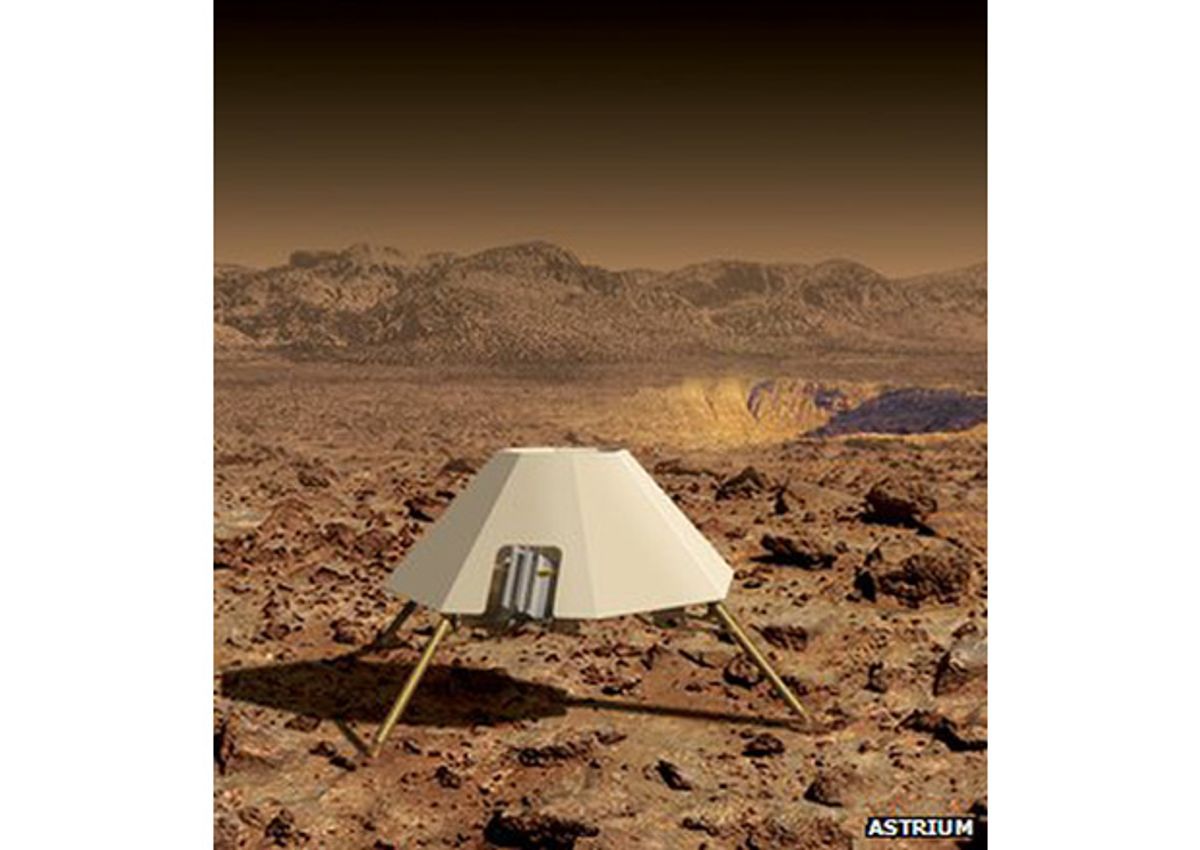You've got to give credit to the European Space Agency: they're totally willing to embrace some, let's say, creative ways of exploring other planets. Just last week we wrote about their idea of sending robot snakes to Mars, and now it's CO2 powered hopping rocketbots that scavenge fuel from the Martian atmosphere.
The roborockets that we've seen before (and we've seen a couple in action) have been very small, where power density has been at a premium. And you do get very high power density from chemical reactions, which is why we all depend on gasoline to move things like cars. Most high impulse rockets (rockets with enough power to lift something big off of the surface of a planet, say) are violent things that aren't designed to cycle on and off over and over and last for years at a time, and they suck down a lot of fuel, making them great at getting spacecraft to a place like Mars but less great at moving around on the surface.
In order for a rocket to work for an extended period on another planet, it'll need to be able to refuel itself, and this is what ESA is trying to make happen. The plan is to make a rocket that uses carbon dioxide as a propellant, since carbon dioxide is something that Mars has scads of. The rocket would suck it straight out of the atmosphere using a radioisotope thermal generator as a power source (Curiosity uses the same thing), and gradually liquify it. When a critical mass of CO2 is reached, the thermal generator heats up a hollow tube full of pebbles made from beryllium and boron carbine. As soon as the tube is piping hot, the CO2 is injected into it, where it rapidly heats up, expands, fires out of a nozzle underneath your lander, and kaboosh, off it goes.
So, great, we've got a rocket that might be able to function on Mars long-term, but why is it worth all the trouble? ESA has run some simulations, and they've calculated that their rocket ought to be able to send a 1,000 kilogram lander (with 20 kg of science payload) on an up and down hop of about one kilometer. Counting recharge time and time doing science, the ESA estimates that the lander could make it a staggering 26 kilometers in just 12 weeks. It's not just about overall distance, either: by going vertical, a lander can get from pretty much whatever point A to whatever point B it wants to, no matter what's in the way.
This concept has been in the works for three years, but it's probably still 10 or 15 years away from a trip to space. We'll circle back sometime in the mid-2020s and let you know how it's going.
Via [ BBC ]
Image: Astrium
Evan Ackerman is a senior editor at IEEE Spectrum. Since 2007, he has written over 6,000 articles on robotics and technology. He has a degree in Martian geology and is excellent at playing bagpipes.



